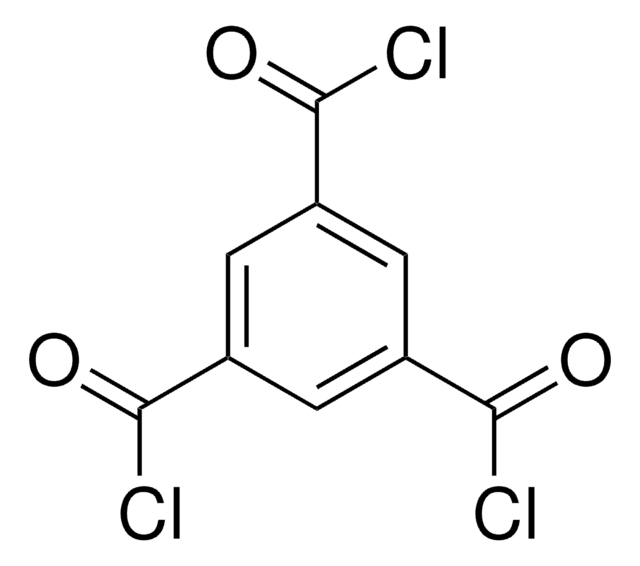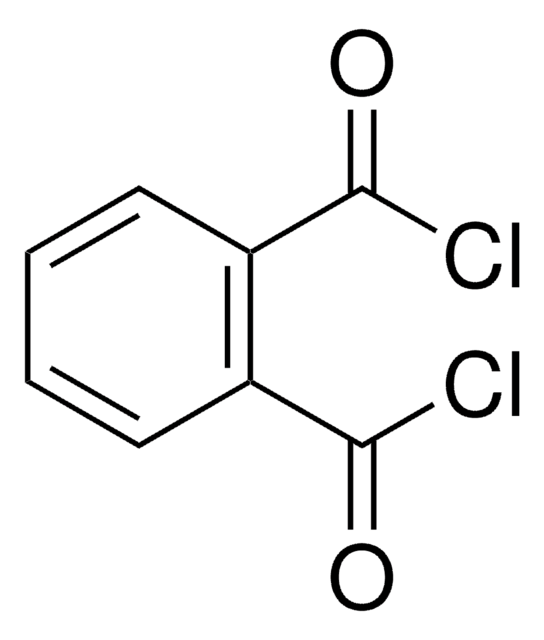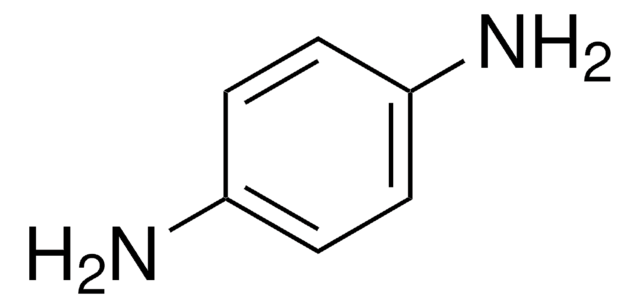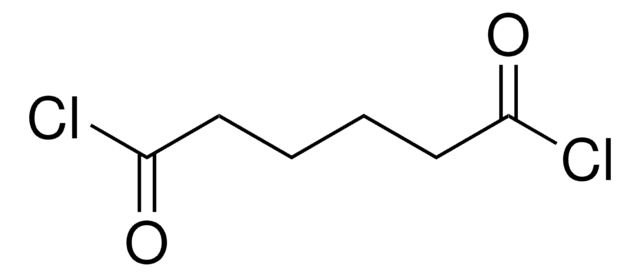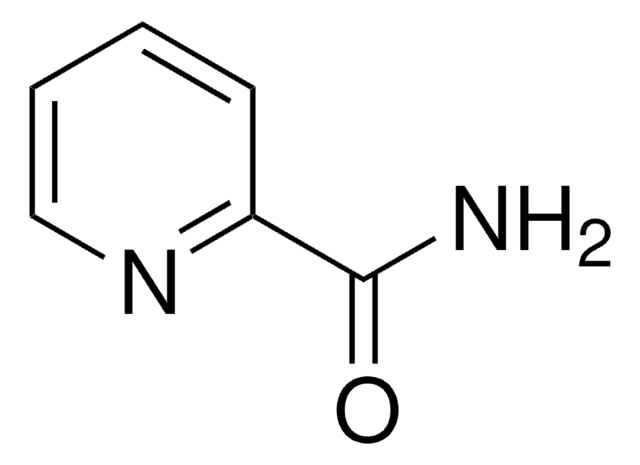120871
Terephthaloyl chloride
≥99%, flakes
Sinónimos:
Terephthalic acid chloride, Terephthaloyl dichloride
About This Item
Productos recomendados
vapor density
7 (vs air)
Quality Level
vapor pressure
0.02 mmHg ( 25 °C)
assay
≥99%
form
flakes
bp
266 °C (lit.)
mp
79-81 °C (lit.)
solubility
ethanol: soluble 100 mg/mL, clear, colorless
SMILES string
ClC(=O)c1ccc(cc1)C(Cl)=O
InChI
1S/C8H4Cl2O2/c9-7(11)5-1-2-6(4-3-5)8(10)12/h1-4H
InChI key
LXEJRKJRKIFVNY-UHFFFAOYSA-N
¿Está buscando productos similares? Visita Guía de comparación de productos
Categorías relacionadas
General description
Application
Legal Information
signalword
Danger
hcodes
Hazard Classifications
Acute Tox. 3 Inhalation - Eye Dam. 1 - Skin Corr. 1A - STOT SE 3
target_organs
Respiratory system
Storage Class
6.1A - Combustible acute toxic Cat. 1 and 2 / very toxic hazardous materials
wgk_germany
WGK 1
flash_point_f
356.0 °F - closed cup
flash_point_c
180 °C - closed cup
ppe
Eyeshields, Faceshields, Gloves, type P3 (EN 143) respirator cartridges
Elija entre una de las versiones más recientes:
¿Ya tiene este producto?
Encuentre la documentación para los productos que ha comprado recientemente en la Biblioteca de documentos.
Artículos
Molecular Layer Deposition of Organic and Hybrid Organic-Inorganic Polymers
Nuestro equipo de científicos tiene experiencia en todas las áreas de investigación: Ciencias de la vida, Ciencia de los materiales, Síntesis química, Cromatografía, Analítica y muchas otras.
Póngase en contacto con el Servicio técnico
